Explaining to me about electricity is like explaining to your Grand-Ma about it. So please be kind and gentle :)
I bought an Earthing Mat from "http://www.amazon.com/dp/B003RLOBOK". It includes a conductive mat to which I connect a white-wire whose other end goes into an earthing point on my wall. As long as a person's body is in contact with the mat, he is getting earthed.
But how do I verify/measure if the conductive mat is getting earthed correctly? (in effect I am getting earthed correctly).
I called up an electrician over to my house who demonstrated and verified that the white-wire (connected to mat) is getting earthed. After inserting one end of the white wire into the earthed socket, he touched one wire of a bulb (with 2 loose wires) to the other end of white-wire. The bulb lit up and he said that white wire is getting earthed.

But he didn't know how to verify the conductive mat. All he said that this looks like rubber and should not work.
I come with an almost zero electrical knowledge. So how can a novice like me verify if the conductive mat is working as it should.
 (
(